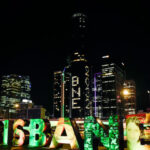
A bomb cyclone is a dangerous weather phenomenon that occurs in mid-latitudes and can bring strong winds, heavy snowfall, flooding, and frigid temperatures. It displays some traits of a hurricane but is not one.
Here is an explanation of bomb cyclones.
What Is a Bomb Cyclone?
A bomb cyclone, also known as explosive cyclogenesis, is a mid-latitude cyclone that rapidly intensifies. It is a low-pressure weather system with rotating winds that circulate in a specific direction depending on the hemisphere.
A bomb cyclone’s winds can reach hurricane force and stronger, typically forming during winter and producing significant precipitation. These storms have a lifespan of about a week, reaching peak intensity over four to five days.
How Does a Bomb Cyclone Form?
Bomb cyclones form when surface and jet stream conditions are ideal for storm intensification. These storms often have a precursor disturbance in the middle troposphere and a warm ocean surface, releasing energy that further intensifies the storm.
Explosive cyclogenesis mainly occurs over oceans during the cold season in both hemispheres. Areas prone to these storms are along the east coast of continents where warm ocean currents exist.
When and Where Are They Most Likely to Form?
Explosive cyclogenesis occurs mostly over oceans during the cold season in both hemispheres. These storms can be very destructive and pose a danger to shipping interests.
What Happens to the Atmospheric Pressure?
In a bomb cyclone, atmospheric pressure can drop to 950 mb or lower, intensifying rapidly at a rate of at least 24 mb in 24 hours.
Why Can We Not Call It a Hurricane?
While bomb cyclones can have hurricane-force winds, they are not hurricanes. They form from different processes and do not have the symmetry of hurricanes. A hurricane originates in the tropics and is not associated with weather fronts or a strong jet stream.





